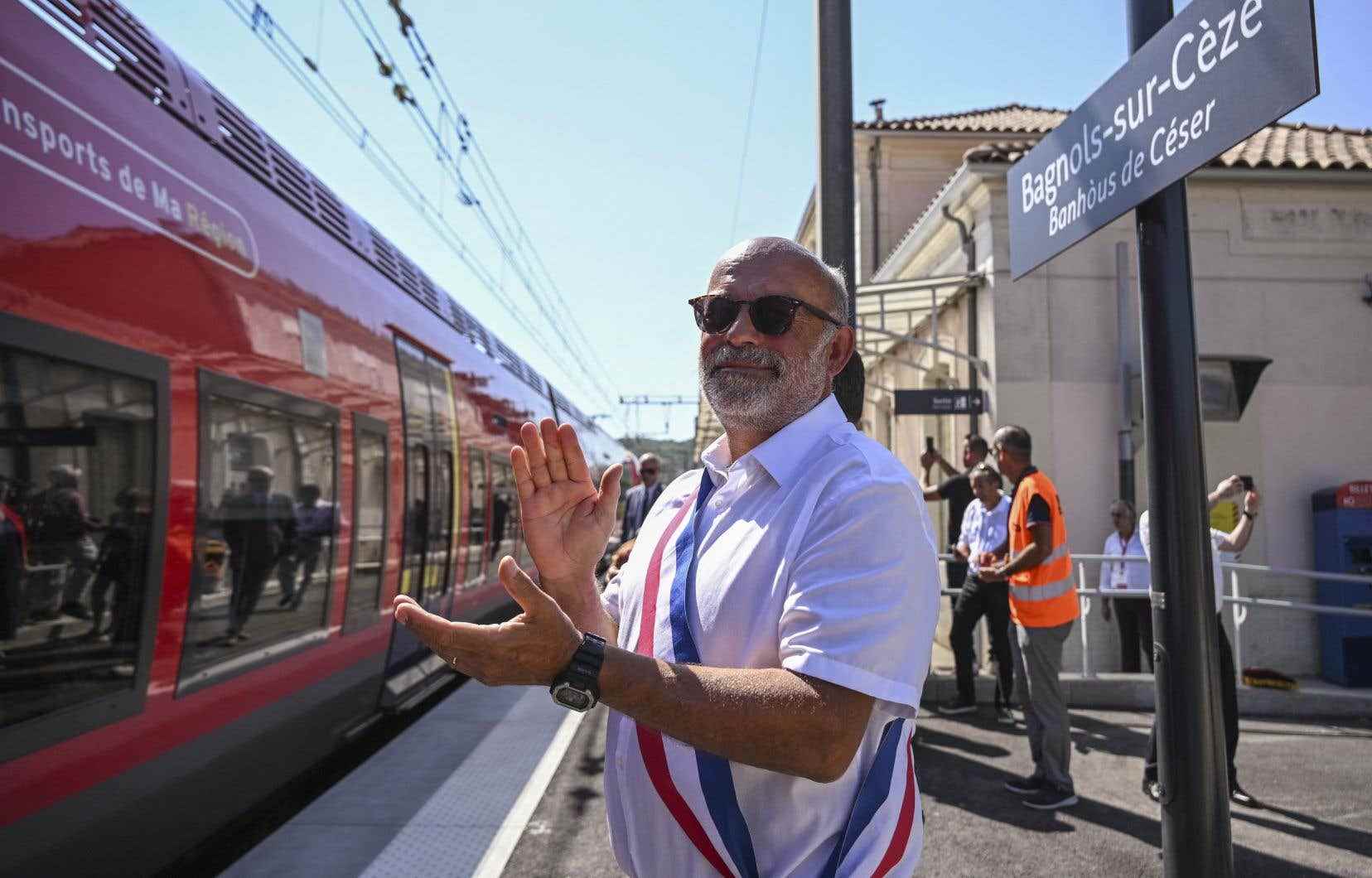“We’ve been waiting for it for so long! “: in Bagnols-sur-Cèze, in the south of France, a crowd welcomed Sunday with pennants and applause the return of the train after almost 50 years of absence, the first reopening of a regional line in the country since 2016.
“We had a lot of promises, it took a lot of fighting, we’ve all been waiting for it for so long and, that’s it, the train is back”, exclaims moved on the platform the mayor of this city of 19 000 inhabitants, Jean-Yves Chapelet, at the arrival of the regional express train (TER) from Occitanie.
Coming from Nîmes, with a stopover in Avignon, the TER will continue its route to Pont-Saint-Esprit, another medium-sized town in this Rhone Gard and second industrial center in Occitania.
In front of Bagnols-sur-Cèze station, dozens of people wear visors proclaiming: “I like the train on the right bank of the Rhône. This railway line will be operational for everyone from Monday morning, after years of mobilization of citizen groups, the CGT union and the Region, which fully financed the work to the tune of 12.8 million euros (16.62 million Canadian dollars), in connection with the SNCF, in order to bring forward the return of this train to 2022, instead of 2025.
After a summer marked by drought, fires and a heat wave which reminded us of the seriousness of climate change, the socialist president of the Occitanie region, Carole Delga, is delighted to “win a battle against carbon”.
The line of the right bank of the Rhône initially linked Givors, in the Rhône, to Nîmes in the Gard, along the river. It was closed for travelers in 1973, at the time of “all cars”.
In about a century, France, which had one of the densest rail networks in Europe in the 1930s, saw some 20,000 kilometers of lines close to passenger service, according to geographer Étienne Auphan.
“Railway Battle”
So, the return to service of this 82 kilometer line, “it’s a bit like having won the rail battle”, underlines Laurette Bastaroli, an 83-year-old retired quality technician, who leads the Federation of TER SNCF Rive users. right and campaigned tirelessly for the return of the train as a “public service”.
“At first, when we talked about the IPCC climate reports to support the importance of this line, people looked at us with wide eyes! she says.
“There is saturation on the roads. With this train, users will be able to go from Pont-Saint-Esprit to Avignon in 30 minutes instead of 50 minutes by car”, underlines Mme Delga.
According to the regional daily Provence, 70,000 cars cross the bridges over the Rhône between the Gard and Avignon every day. Eventually, five other SNCF stations will be reopened for a project that will cost a total of 100 million euros (130 million Canadian dollars).
“It is important to give the possibility to modest people who do not necessarily have a car to go to work in Avignon”, remarks Annab Sheherazade, 49, resident of Bagnols-sur-Cèze. “And then, it makes less pollution. »
Ultimately, the Occitanie region wants to reopen other lines between medium-sized towns such as Alès-Bessèges. And remains in contact with the Auvergne-Rhône-Alpes region, which could also relaunch lines on the right bank of the Rhône, in particular in Ardèche, the only department in France without a passenger station.
“I support the call of the CEO of the SNCF for a massive investment plan of 100 billion euros in France”, declares Carole Delga who asks the State “for a more proactive policy”.
